How To Find A Lost Dog: Tips To Bring Your Missing Dog Home Fast
Go through the checklist and follow our tips for finding your best friend fast.
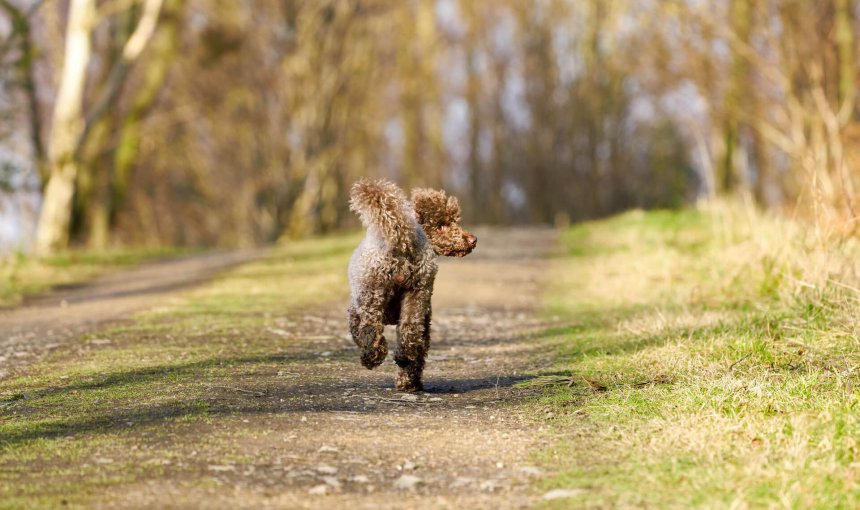
A lost dog scenario is nearly every dog parent’s worst nightmare. With so many potential reasons why dogs run away, it’s no wonder about one third of all dogs go missing at some point in their life1. If your dog is missing right now, trust us, we’ve been there. It’s understandable if you feel panicky, anxious or scared. Our advice? Pause, take a few deep breaths and try to stay calm. A positive mindset is one of your greatest tools on the search for your dog.
Below, you’ll find out how to find a lost dog. But first, here are some encouraging lost dog facts to reassure you:
What are the chances of finding a lost dog?
- 93% of lost dogs (in a survey by the ASPCA) were eventually recovered2
- 90% is the likelihood of finding a lost dog within the first 12 hours
- 49% of dog parents found their canine friend by searching the neighborhood
- 16% of lost dogs manage to find their way back home
- 15% of dog parents found their dogs thanks to a microchip or ID tag
- 6% of dog parents found their dogs at animal shelters
- A lost dog can potentially survive months or even years on their own
- A GPS dog tracker is the #1 way to prevent or find a lost dog
So if you have a lost dog, start your search right away to boost your chances of finding them. Your dog might even return on their own, using scent to guide their way. Even the most domesticated dogs can travel long distances and survive by scavenging for food and water until they are home again. Fear not. You have very good chances of being reunited with your dog again. And to avoid the stress and worry, you can rely on a GPS dog tracker that can always show you where your dog is.
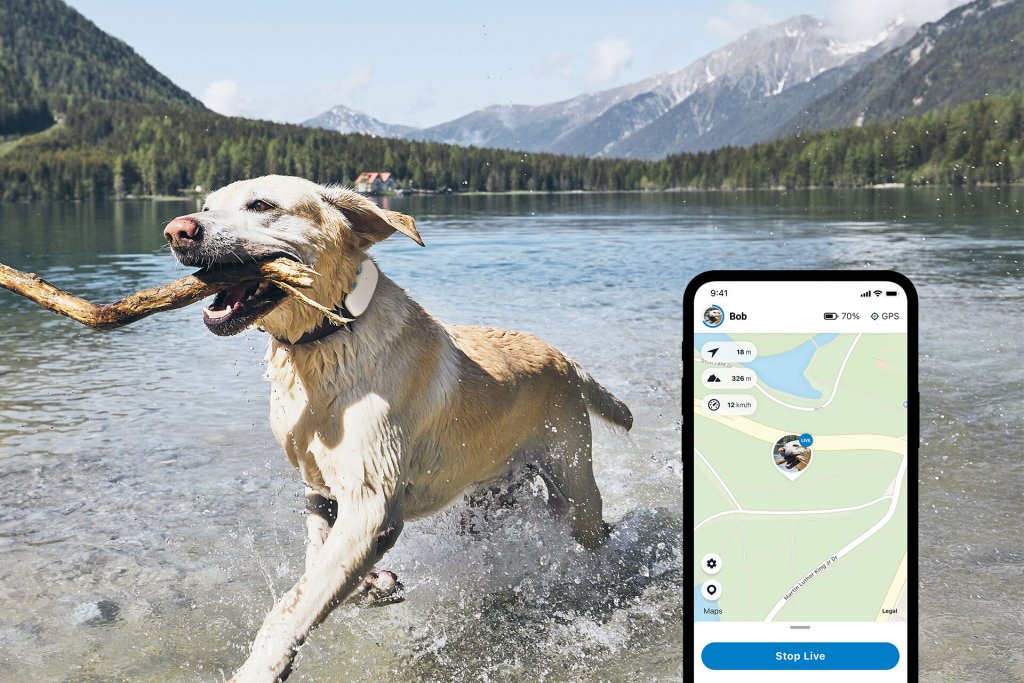
For peace of mind, follow your dog’s every step. The Tractive GPS Dog Tracker (pictured above) uses GPS tech 🛰️ to help you pinpoint📍 the location of your dog 🐕 anywhere in the world. 🌎
Here’s some feedback Rachel shared with us about finding her dog Lola with Tractive GPS:
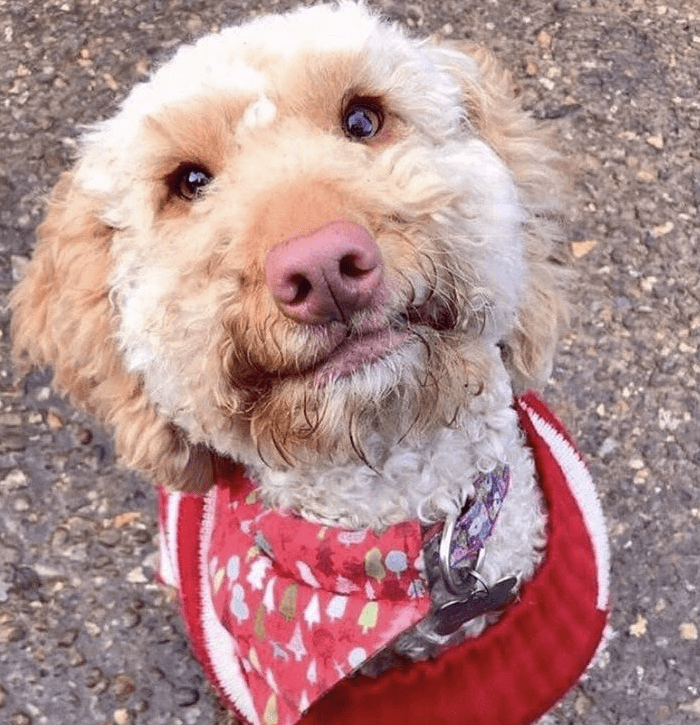
I lost Lola in Delamere forest. I started looking for her in the opposite direction; however, on the app I could see her coming towards me. Then, 30 seconds later I could see her in the distance on the horizon. I was so relieved! Tractive gives me peace of mind!
Track My Dog with Tractive GPS
How to find a lost dog
1. Check at home first
If your dog is missing, first check your home and your immediate surroundings. Is your dog scared? They may be hiding nearby. Could they have gotten stuck somewhere? Check inside the:
- closets
- shed/garage
- pool
- cars
- basement/attic
- garden
and anywhere else your four-legged friend might be. Ask friends or family to help you search. Bring your dog’s favorite treats or toy with you to lure them out of hiding. Place your dirty clothes or your dog’s bedding outside to attract your dog using familiar scents.
2. Call and verify your lost dog’s microchip contact information
If your lost dog has been microchipped, call the microchip company to make sure your contact info is up to date. That way if someone finds your dog and brings them into a vet or shelter, the microchip ID can be scanned and they can look you up in the microchip database. If your contact info is correct and all goes well, you may receive a call in case your lost dog is found.
Tell the microchip company that your dog is missing so they can alert local animal shelters. If you know the microchip ID number but not the company, use the universal pet microchip lookup. You can also register your contact details in microchip databases such as:
How to find a lost dog with a microchip?
Remember, only 15% of lost dog parents found their dog thanks to a microchip or ID tag. You can’t rely on a microchip alone to find your dog. Microchips do not contain any GPS or other technology that would help you track or locate your dog in real time. A microchip’s only job is to identify a missing dog’s details in case they are lost and found.

3. Determine your search radius
Next, before you expand your search for your lost dog, ask yourself these questions:
- Did your dog go missing near home, or in an unfamiliar area?
- Was your dog frightened away by something, or looking for an adventure?
- Are there places or people nearby you know your dog may have gone to visit?
- Are there dangers nearby, places where your pet could get stuck or in trouble?
- How far do you realistically think your dog could have traveled in the amount of time they’ve been lost?
- Is your dog active and fit and likely to have run further, or laid-back and less active?
- How long has your dog been running?
The answers to these questions can help you narrow down your search radius and search smarter.
Caution: Be careful not to jump to conclusions that may cause you to give up your search. For example, don’t assume your dog was kidnapped or attacked. It could very well be they got distracted by a wild animal, or are stuck in a neighbor’s fence down the road.
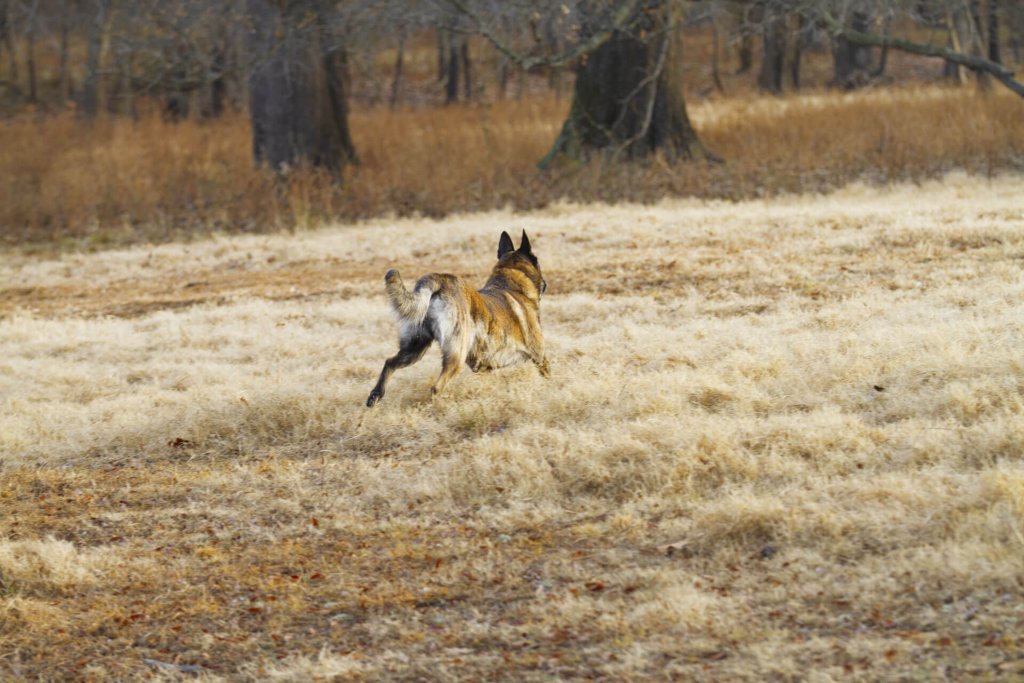
4. Search the area where the dog was lost
If your dog has not returned to you yet, it’s time to take action to bring them home. Searching the immediate surroundings and larger radius of where your dog was lost will increase your chance of finding them. Here are some tips to help you on your search:
- Call your dog’s name: Call your dog’s name clearly and calmly – you don’t want to frighten your dog further by making them think you’re angry.
- Ask others to help you search: Ask family, friends, neighbors, or others nearby to assist you in the search. If a stranger finds your dog, ask them to call and inform you first before they approach the dog. An unknown person approaching a lost dog could make them even more afraid.
- Bring clear photos of your dog: Show your dog’s picture to neighbors and other people you come across; leave them a copy of the photo with your phone number on the back.
- Make sure one person stays home: While everyone is out searching, ensure that at least one person stays home to receive your dog should they come back on their own.
- Keep your door open: If your dog was lost at home, or while staying at a friend’s house or holiday home, be sure to leave the house door and gate open, so that they can return home on their own.
- Bring your dog’s favorite toy or treat: Dogs can follow scents for miles, so place their favorite blanket, bed, or chew-toy outside the front door of your house. Also bring toys and treats with you on your search.
- Retrace your path: Revisit the areas you recently or frequently walk with the dog – you may find that they have returned to these familiar areas in their search for you.
- Ask the locals if anyone has seen your dog: While you are searching the area where your dog was lost, ask people you come across if they have seen your dog recently. Leave your phone number with them in case they do find or see the dog.
- Expand your search: If you still have not located your dog, expand your search to the wider area. Drive through the neighborhood to cover more ground if necessary.
5. Report your dog missing and contact local shelters
Call local animal shelters, pet rescue centers, dog wardens, animal control and any other similar organizations in your area to report your dog missing and to see if anyone has already turned your dog in to one of these facilities.
Use Petco Lost Love in the US or the National Pet Register in the UK to report your dog missing in the national database. There you can also search through found dog postings to see if anyone has spotted your furry friend.
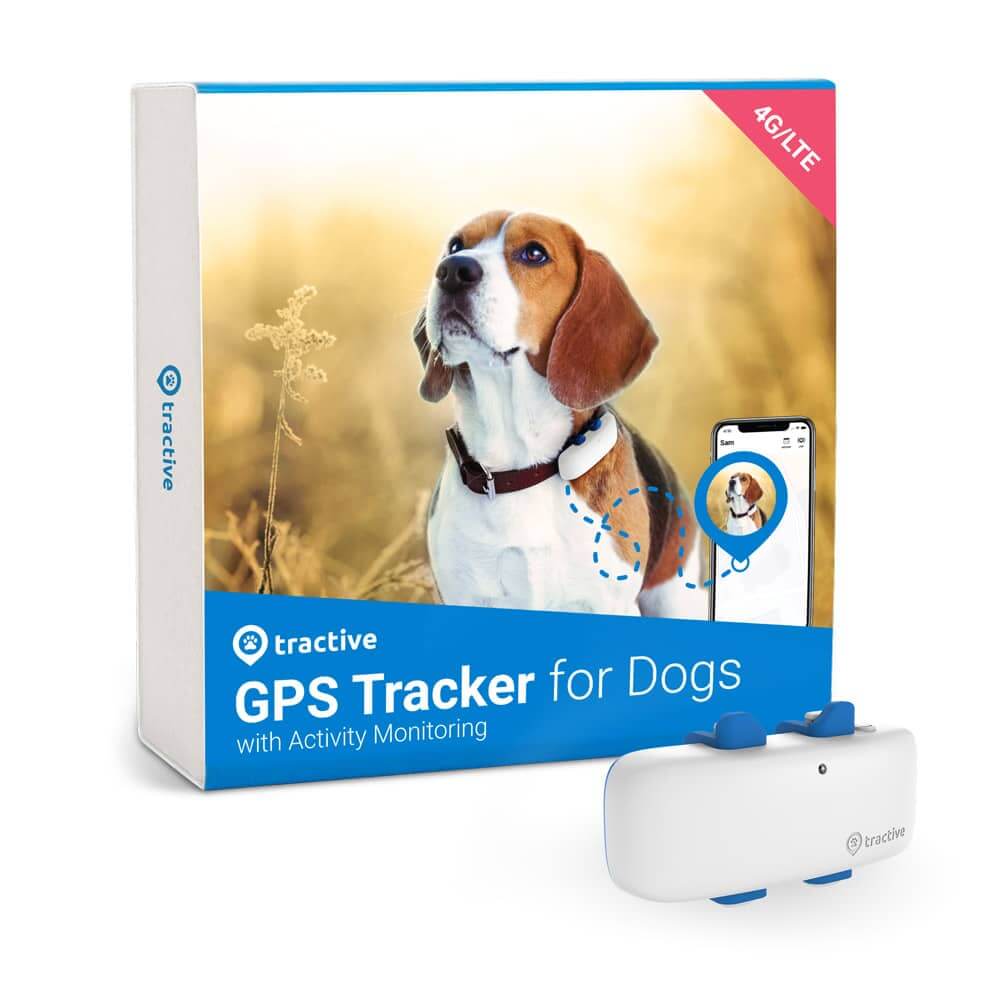
Always know where your dog is
Follow every step in real-time with unlimited range. Get alerts if they wander too far. Keep them happy & healthy with Wellness Monitoring. And let others – like walkers or sitters – keep an eye on your dog too.
See what Consumer Reports says about Tractive
6. Use Facebook and other social media networks
Announce on your social media networks that your dog is missing, and include the following information in the post:
- several photos of your dog
- date and area your dog was last seen
- information about your dog’s temperament – for example, are they friendly, or fearful?
- your contact info, including phone number
Be sure to share the post in any relevant Facebook groups for lost/missing dogs/pets in your area.
7. Make and distribute lost dog posters
Make and print paper lost dog flyers with your dog’s information that you can post around your neighborhood and/or the area where your dog was lost. Use large, bright, neon paper if possible so the flyer will be more visible. A good lost pet sign includes:
- Description of the dog, including any special or recognizable features
- A photo of the dog
- Collar tag details
- Last known location
- Microchip ID number
- Your contact details
- Reward details
Tip: To help, we’ve created a free lost dog poster template to download and use immediately! Download here: Free Lost Dog Poster Template
Plaster the lost dog posters all over telephone poles in the area and make a large sign to place in your front yard or on your front door.
Hang the lost dog flyer on bulletin boards, at local coffee shops and stores, vet practices, pet stores, animal shelters and animal hospitals.
If you want to take this one step further, try car tagging as a means to help inform the community of your lost pet.
Tip: PawBoost is a service that helps you report your lost dog, post to local lost & found pet Facebook pages, alert local community members, print a lost dog flyer and more.
Do ‘lost dog’ posters really help people find their pets?
Yes! There are many stories you can read online about how printed lost dog posters really helped reunite dog parents with their four legged friend. Even in the age of social media, paper flyers are effective. So use both digital and physical lost log posters for best results.
8. Consider other options to find a lost dog
If you still haven’t found your missing dog, it’s time to get creative. These ideas may help you to bring your canine buddy home:
- Pay to put out a missing dog notice in your local newspaper or radio.
- Hire a pet detective or missing animal response specialist.
- Offer a reward, and be (relatively) generous.
- Call or visit animal shelters each day.
- Use other lost dog websites and apps, such as Fido Finder or Pet Amber Alert.
- Hire a sniffer dog to help you find your lost dog.
- Contact animal control to find out if they’ve seen your dog.
- Hang up lost dog posters at the vet in case your dog has been injured and brought in by a kind stranger.
9. Don’t give up!
It can be easy to get discouraged if your dog goes missing for any significant amount of time. But many worried dog parents like yourself have been in your shoes and were eventually successfully reunited with their beloved dogs again. No matter if it takes hours, days, weeks, or months, do not lose hope that you can and will find your dog someday.
Watch the video below for some inspiring stories of lost dogs who were reunited with their families 🐕🏠❤️
How to find a lost dog at night
Looking for a lost dog at night? Here are some tips to help:
- Determine your search radius by considering things like your dog’s fitness level, attitude, personality, favorite places and people, or what might have caused them to run off. Get a map and mark off your targeted search area to make your search more efficient.
- Make sure you’ve already completed the steps above, such as making flyers, alerting nearby vets and shelters, posting on lost pet websites and social media and reporting your pet lost.
- Gather a few close friends and family and others who know your dog to help you on your search. Split up so you can each cover a different area.
- Bring a flashlight or headlamp to help you search in the dark.
- Call your dog by their name.
- Leave your dog’s favorite items like water, food, toys or treats in the spot where your dog ran off. Continue checking that spot, in case your dog returns.
- Don’t chase them – this would only make them more anxious or stressed. Let them come back to you.
How to find a lost dog with a Tractive GPS Dog Tracker
If your missing dog is equipped with a Tractive GPS Dog Tracker, great! Here’s how to locate and bring your dog home safe:
- Turn on LIVE Mode (if it’s not already on) to get rapid, real-time location updates.
- Check where your dog has been in the past few hours using Location History – they might still be they’re still in the area.
- Tell friends, family and neighbors to track together with you.
- Remember that you can share location with anyone (for example, the police) who can help retrieve your dog.
- Use Find Mode to pinpoint your dog’s location – really useful if they’re showing as nearby but you can’t see them.
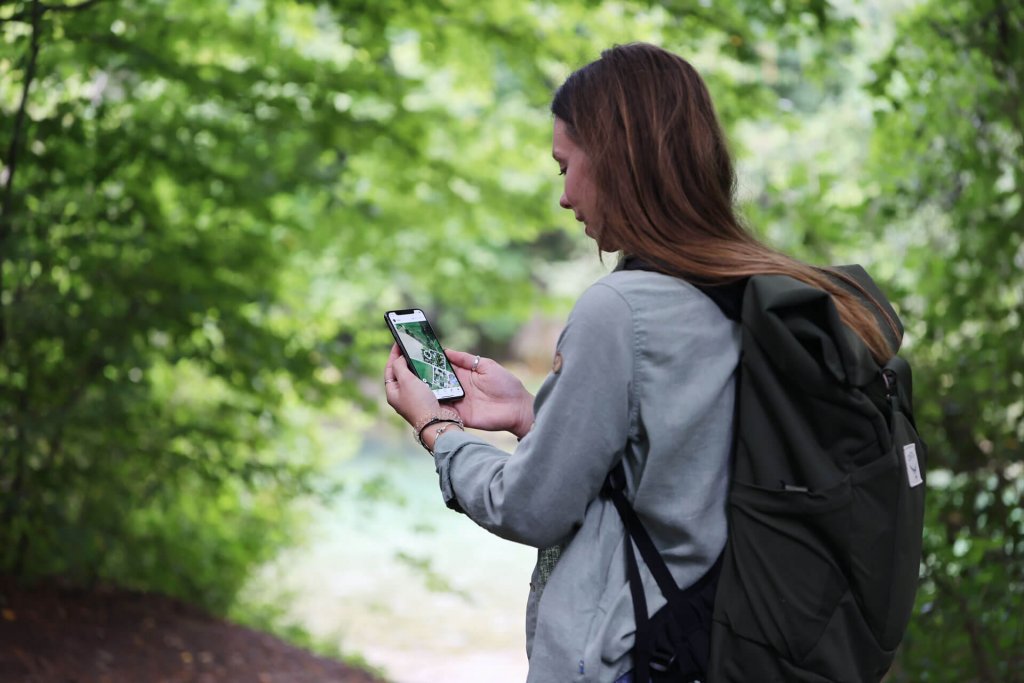
What to do if you find a lost dog
What if you are the one who finds a lost dog? Here are some tips in case you find yourself in that scenario:
- If the dog won’t come near you: take a photo of the dog and post it to social media with a description and location of the dog. Share it in lost & found dog groups on Facebook.
- Using calm body language, encourage the dog to come to you. Turning sideways and moving slowly can help the dog to feel less intimidated by you. Offering a treat can help.
- Do not chase or run after the dog.
- Try opening your car door and inviting the dog to go on a car ride in an excited voice. The dog may jump happily into the back of your vehicle.
- If the dog is aggressive or otherwise difficult to catch, contact animal control for assistance.
- Once you have the dog, keep them safely contained until you find their caretaker. A leash, fenced area, or room in your home are helpful here.
- Make sure they have access to plenty of fresh water, fresh air and ventilation, and a comfortable temperature. Beware of heat stroke in dogs.
- Keep the dog separated from any other pets in your home (for the safety of all animals involved).
- In case the dog is injured or sick, take them to a nearby animal hospital or vet for treatment. The vet can also scan for a microchip to identify the family of the dog. Note that you might have to cover any related costs.
- Check the dog’s collar tags for a phone number, microchip ID, or any other information. Use this info to look up and contact the dog’s parents.
- In case you can’t reach the dog’s guardian, contact nearby animal shelters, animal control, and vet clinics to let them know you’ve found a lost dog.
- Create ‘found dog’ posters and post them around your neighborhood or wherever the dog was found. Make digital found dog posts and distribute them across your social media platforms.
- Register the found dog on a service like Petco Love Lost.
Beware of dog theft scams
If you’ve found a lost dog, be aware that dog thieves may try to contact you, pretending the dog is theirs, in order to kidnap the dog and sell them. This is especially possible in case the dog belongs to a rare breed. So when posting on websites like craigslist.org, post a brief description of the dog and ask the person to give you specific information about the dog in order to prove their relationship to the dog.
Hint: If someone is claiming a dog is theirs, let them prove it by using their real name. If you know the dog’s name, do not give that information upfront to anyone who seems suspicious. A dog kidnapper will most likely not know the dog’s name.
How to ensure that your dog is never lost again:
You would probably like to avoid this situation and prevent your dog from ever getting lost again. Makes 100% sense. So be sure to do the following, to prevent your dog from getting lost (again):
- Ensure your dog is always wearing a high quality collar with a dog tag that contains your phone number and address.
- Microchip your dog and equip them with a GPS tracker.
- Take frequent walks with your dog so that they get enough exercise and satisfy their curiosity and love for adventure.
- Keep your dog safe in a special dog seat or container during car rides.
- Check your gate or fence regularly for weak spots where they could possibly escape.
- Take photos of your dog so that you have them in case they go missing.
The best case scenario for lost dogs
Ideally, your dog would always be wearing a GPS dog tracker, which would let you to locate them within seconds. With a Tractive GPS tracker and the Tractive GPS app, you can keep your dog safe and sound with all these features:
- LIVE Mode – get real-time location updates every 2-3 seconds.
- Unlimited Range – follow your dog no matter how far they go, across the whole world
- Virtual Fence – be alerted in case your dog leaves a safe space, like your yard
- Location History – see where your dog has been in the past 365 days, and discover where they hang out a lot
- Family Sharing – let friends, family, dog-sitters and walkers track together with you
- Light & Sound – make it easier to spot your dog when it’s dark out
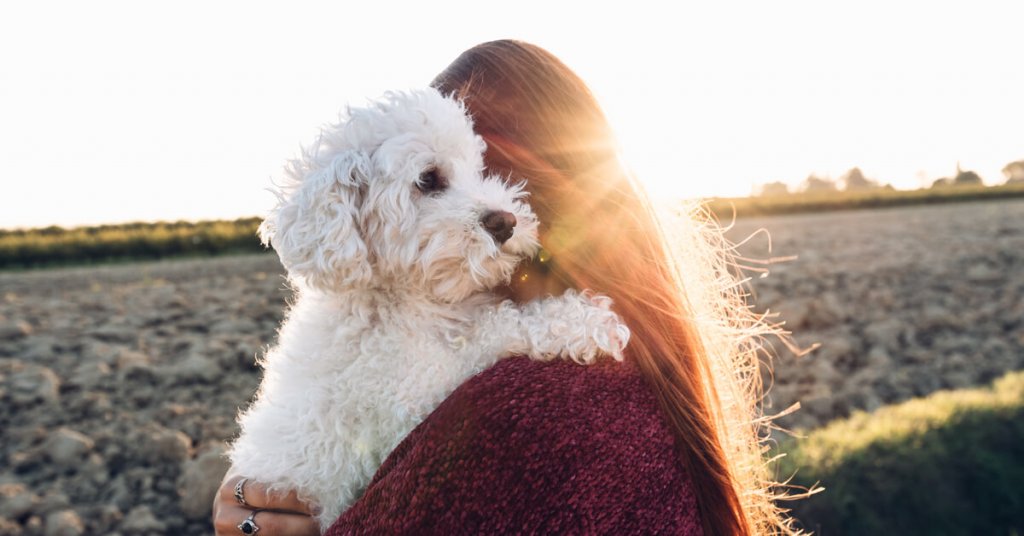
Get a Tractive GPS tracker to get peace of mind knowing you’ll be able to follow your dog’s every step. And sign up for the Tractive newsletter for more helpful information, plus special offers. And in case you’re actively looking for your dog, we’ve got our fingers crossed for you.
Now you know how to find a lost dog. Share this article with a friend:





